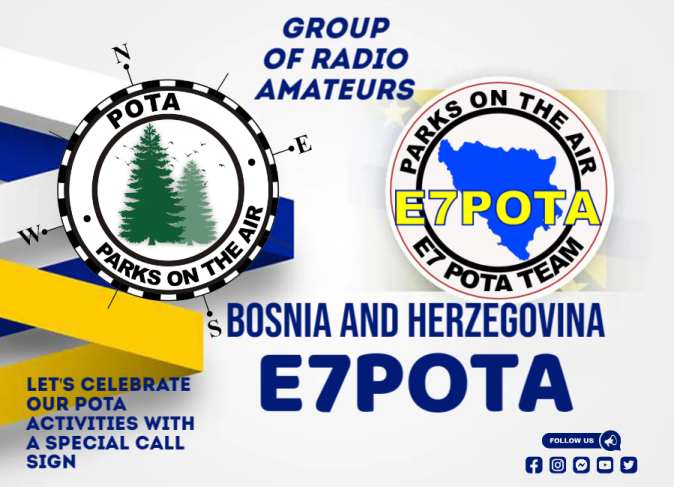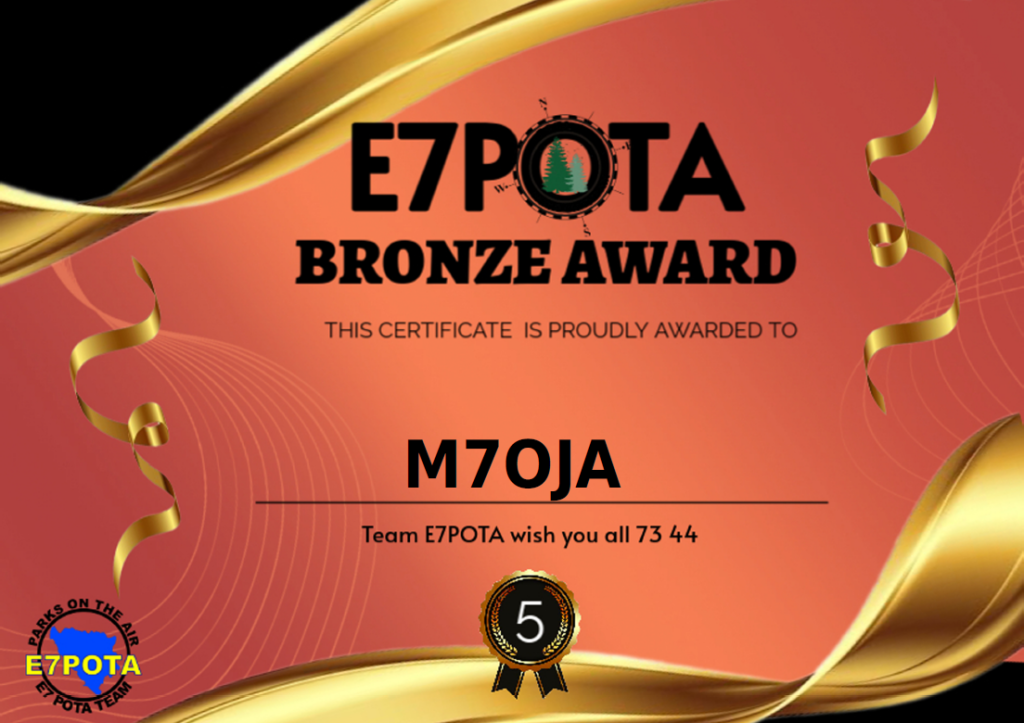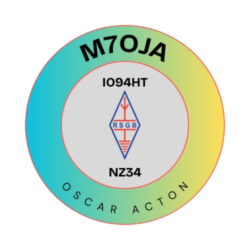
I had the pleasure of speaking with Esad E77PY, one of the operators and a group leader for the special event callsign E7POTA. The callsign is in use in Bosnia-Herzegovina for portable activations with the Parks on the Air (POTA) awards scheme.
Esad is a truck driver in the USA, but spends a lot of time in his home country Bosnia-Herzegovina. He holds licences in both countries, both as E77PY (CEPT) in Bosnia and N5PYY (General) in the USA. From working mobile in his truck to discovering POTA when it was first introduced, Esad has had a lot of experience in many different avenues of the hobby.
Last year, Esad and the rest of the group had the idea to start a special event callsign to begin activating POTA in Bosnia. This concept faced many challenges, but after a long process of applying and waiting for the callsign from the Bosnian telecommunications regulator, E7POTA was born and on the air in February 2025.
Esad gives a special thanks to Nicola E77AX, manager of Parks on the Air for E7 (Bosnia-Herzegovina). Thanks to Nicola, a breakthrough was made last year for Bosnian POTA. Through his hard work, over 150 parks were added to the program (compared to just 15) which provided the foundation for the E7POTA group to operate. Special thanks also to Husein E75HZ who struggled with the bureaucracy to register the event callsign with the authorities.
The group of 10-13 activators, including E70Z, E75HZ, E75EP and Esad’s wife E77LZ, operates on a range of bands and modes from 10-40m. The callsign is in use on FT8, SSB and CW. An additional operator, living in Austria, uses the CEPT regulations to operate as OE/E7POTA, adding further opportunities to be active on the bands. Currently, the callsign is only operated during the day, but that is planned to change with more night-time activations utilising the 80m band.
During Esad’s first POTA activation, he achieved a pileup of around 150 QSOs on the SSB mode. He uses a range of equipment, both a go-box including a Yaesu FT-991A and a lighter portable kit with a Yaesu 710 in a pelican box with a 20Ah battery. In terms of antennas, a simple dipole is Esad’s favourite, and the use of a loading coil provides a full range of bands.
Depending on the weather, Esad either operates out in the field or in his vehicle. Because POTA allows for operation within close proximity to the designated park, it is often possible to activate from a vehicle or a nearby building. This is useful in wet weather and provides a lifeline during the winter.
The E7POTA callsign provides an award scheme, accessible via their website HERE (link opens in new tab). Utilising free open-source software by DB4SCW, the scheme allows you to win a tier of awards for working the special callsign. I was lucky enough to receive my Bronze award this month and I am proud to be the first amateur to do so. I look forward to climbing the tiers with hopefully many more QSOs soon.

So far, over 1000 QSOs have been achieved in little over 25 days. The group is planning many more activations over the coming days and weeks, so keep an eye on the POTA spots website (HERE) and the usual DX clusters.
I asked Esad if he could give one piece of advice to stations looking to either activate or hunt in the POTA program. He replied that the scheme is very fun and to get involved as much as you can. “It [the POTA group] feels like a big family”, he quotes, and getting out in the field provides a great opportunity to be an ambassador to the hobby. By setting up portable, it gives members of the public a chance to see what we do and get involved. Field days such as this are popular in America, but less so in Europe, so the E7POTA callsign is hoping to set a new precedent and advertise the hobby.
You can find out more about the E7POTA callsign on the dedicated Facebook group, accessible HERE (link opens in new tab).
